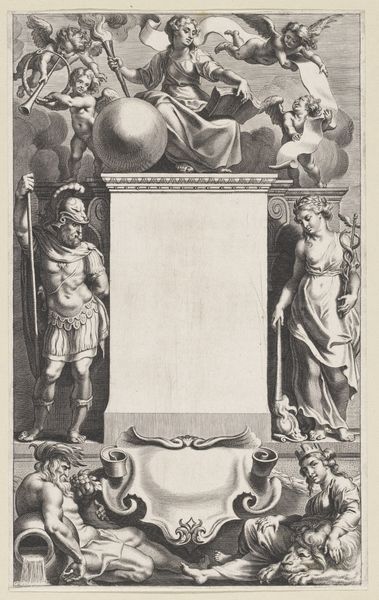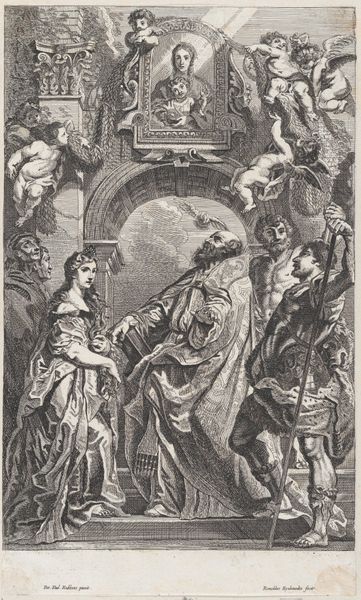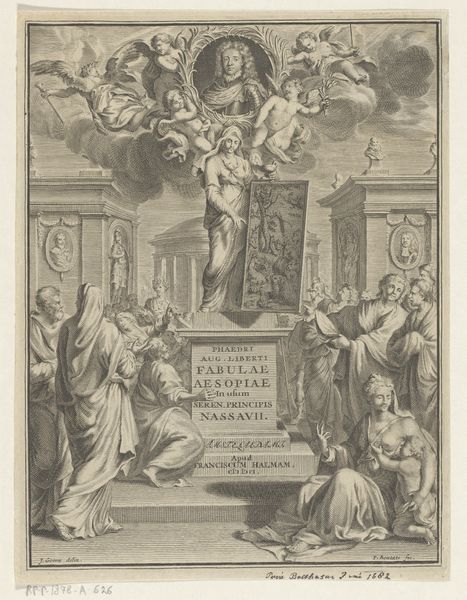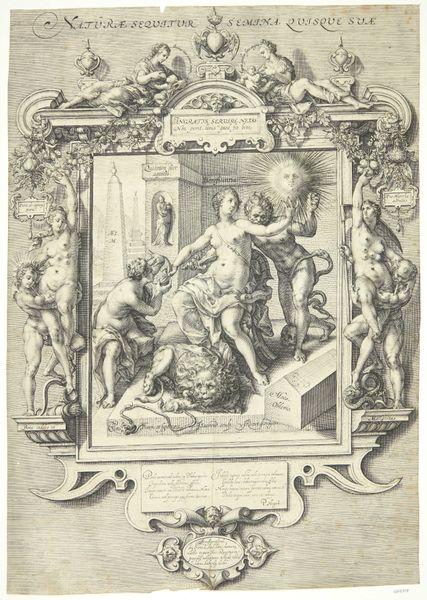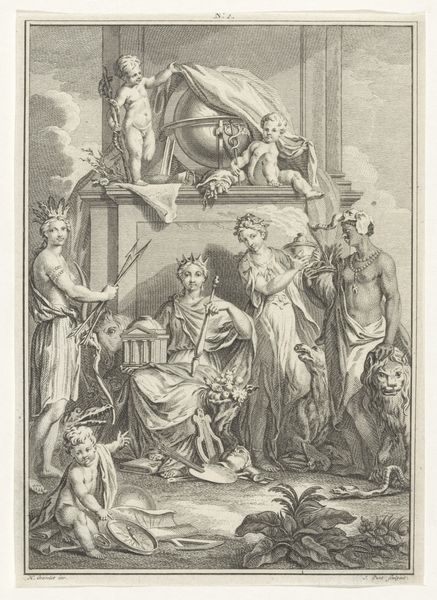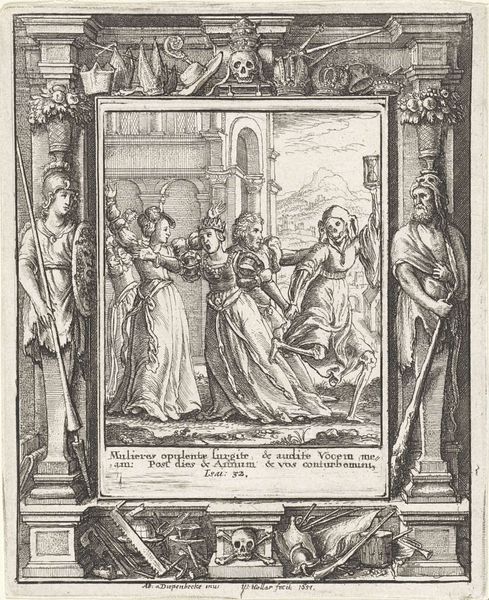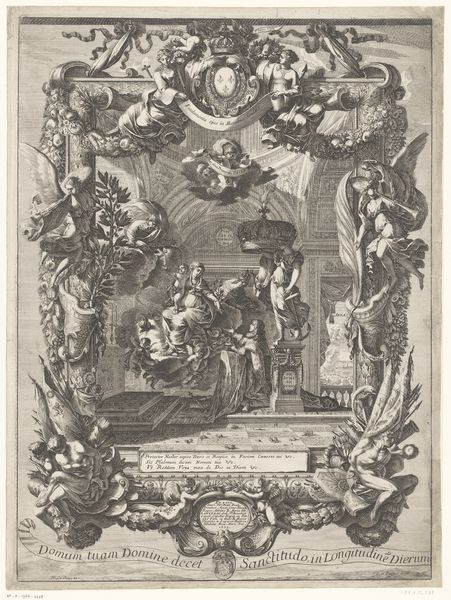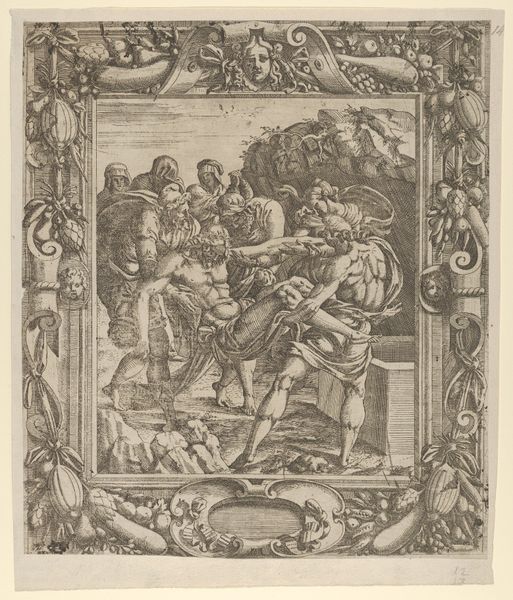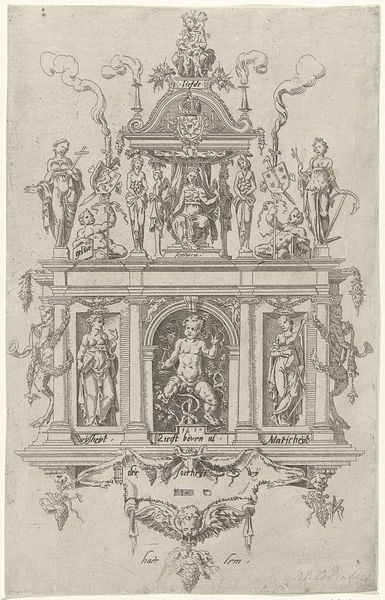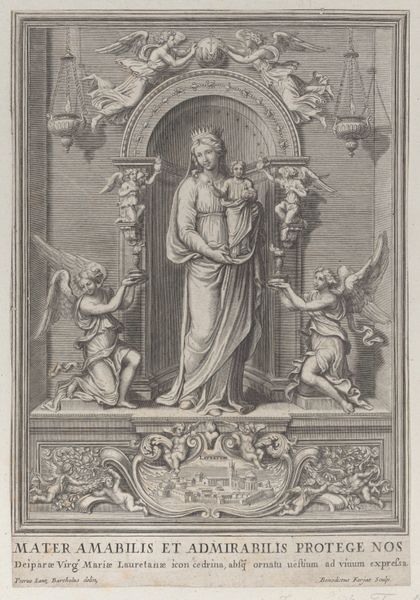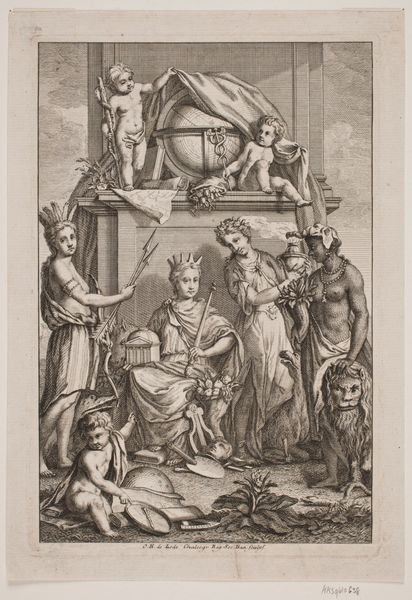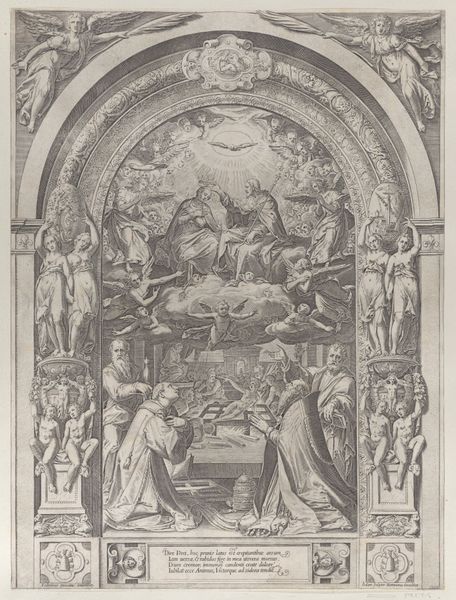
The Return from Egypt, the Christ child walking between the Virgin and Saint Joseph 1645 - 1692
0:00
0:00
drawing, print, engraving
#
drawing
#
narrative-art
#
baroque
# print
#
landscape
#
figuration
#
history-painting
#
engraving
#
virgin-mary
Dimensions: Plate: 10 13/16 × 7 13/16 in. (27.5 × 19.8 cm) Sheet (Trimmed): 18 5/16 × 13 7/8 in. (46.5 × 35.2 cm)
Copyright: Public Domain
Editor: This is "The Return from Egypt, the Christ child walking between the Virgin and Saint Joseph," a Baroque print by Frans Huberti, created sometime between 1645 and 1692. The intricacy of the engraving is astounding. What strikes you most about the material execution here? Curator: The image's devotional power stems not just from its subject, but its mass-producible nature. This engraving isn't a unique art object, but an artifact of widespread faith, materially distributed. Think of the labor involved—the engraver’s skill, the printing press, the paper itself – each stage represents an aspect of devotional life made manifest in a tangible form. Editor: So, it's less about Huberti's artistic vision and more about how the print functioned as a commodity of faith? Curator: Precisely. Consider the socio-economic implications of devotional imagery being made available to a broader audience. How does this impact established power structures, when individual piety can be materially fostered outside of, say, expensive painting commissions? Editor: That's fascinating. It makes me think about the circulation of images and their effect on religious identity. It's almost like Huberti was creating something similar to a contemporary advertising campaign, of faith. Curator: To some degree, yes, a fascinating material intervention. Where did this ‘advertisement’ find its audience? Think about the access to paper at this time, the literacy, who consumes the final product, how do they interact with it? Editor: It completely changes how I see the piece, from a singular work of art to a product of its time. It really is much more complex when considering this context. Curator: Indeed. Examining the material and mode of production challenges conventional aesthetic notions and offers us a richer understanding.
Comments
No comments
Be the first to comment and join the conversation on the ultimate creative platform.
